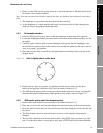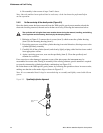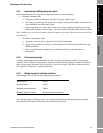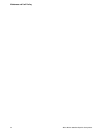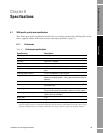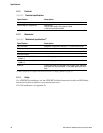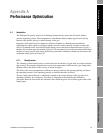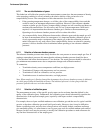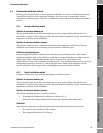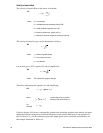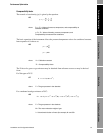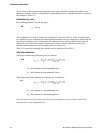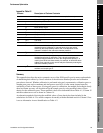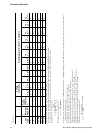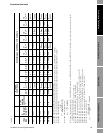
Installation and Configuration Manual 49
Performance Optimization
Principles of Operation Certified System DrawingsReturn PolicyPerformance Optimization
A.2 Recommended calibration methods
From the previous descriptions it can be appreciated that there is a choice of calibration procedures.
These differ in detail to suit the operating conditions, the types of gas to be measured, and the
availability of calibration gases. However, all calibrations can be separated into three general tasks as
follows:
A.2.1 General calibration method
Selection of reference chamber gas
This gas should ideally be similar to the sample gas as far as compressibility characteristics are
concerned (it is usual for the sample gas to be used in the reference chamber) in order to minimize the
temperature coefficient of the instrument.
Selection of reference chamber pressure
This pressure should be set to a value which minimizes the temperature coefficient and also any
calibration errors which result from using non-representative calibration gases.
Calibration and sample gases
Having charged the reference chamber to the selected pressure chamber pressure, then suitable
adjustment should be made to the calibration coefficients to ensure minimum error when using the
sample gases. These calibration adjustments can be calculated from a knowledge of the
compressibility factors of the calibration and sample gases, or by establishing the necessary offsets by
measurement experience. Section A.2.2 details the procedures which can be adapted to suit any
specific calibrations involving gas mixes, and highlights the special problems entailed.
A.2.2 Specific calibration method
Example for natural gas using methane and nitrogen as calibration gases.
Selection of reference chamber gas
This gas should ideally be similar to the sample gas as far as compressibility characteristics are
concerned (it is usual for the sample gas to be used in the reference chamber) in order to minimize the
temperature coefficient of the instrument.
Selection of reference chamber pressure
The reference chamber pressure is selected as follows:
• To minimize the temperature coefficient (see Section 4.1.3).
• To minimize the compressibility effect between the calibration and sample gases.
Calibration
Apart from the temperature coefficient characteristics, the major potential error sources are:
• The velocity of sound effect (VOS) of the gas
• The compressibility factor (Z) of the gas



